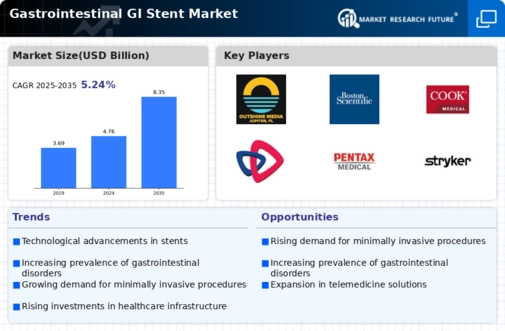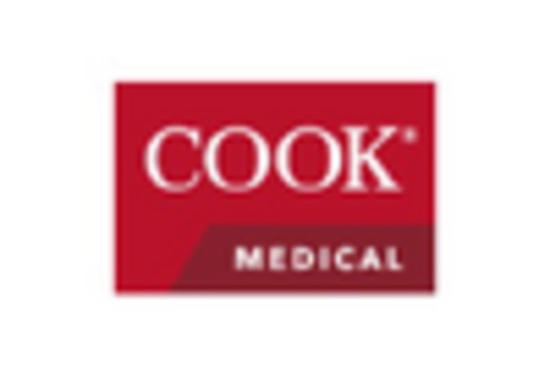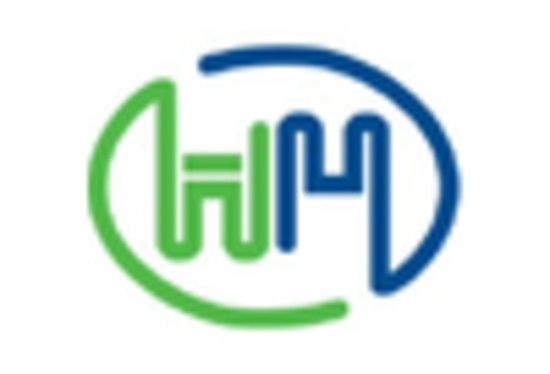Focus on Minimally Invasive Procedures
The shift towards minimally invasive procedures is reshaping the Gastrointestinal GI Stent Market. Patients and healthcare professionals alike are increasingly favoring techniques that reduce recovery time and minimize surgical risks. Stenting procedures, which can often be performed endoscopically, align with this trend, offering effective solutions for various gastrointestinal issues. The market is likely to benefit from this preference, as stents provide a less traumatic alternative to traditional surgical interventions. As a result, the demand for gastrointestinal stents is anticipated to grow, with projections indicating a steady increase in procedure volumes over the coming years.
Technological Advancements in Stent Design
The Gastrointestinal GI Stent Market is experiencing a notable transformation due to rapid technological advancements in stent design. Innovations such as biodegradable stents and drug-eluting stents are gaining traction, enhancing patient outcomes and reducing complications. These advancements are likely to improve the efficacy of stenting procedures, thereby increasing adoption rates among healthcare providers. Furthermore, the integration of advanced imaging techniques and materials science is enabling the development of stents that are more durable and biocompatible. As a result, the market is projected to witness a compound annual growth rate (CAGR) of approximately 6% over the next few years, driven by these technological improvements.
Regulatory Approvals and Market Accessibility
Regulatory approvals play a crucial role in shaping the Gastrointestinal GI Stent Market. The streamlined approval processes for new stent technologies are likely to enhance market accessibility, allowing innovative products to reach healthcare providers more swiftly. Regulatory bodies are increasingly recognizing the importance of advanced stenting solutions, which could lead to expedited approvals for novel designs and materials. This trend may foster a competitive environment, encouraging manufacturers to invest in research and development. As a result, the market could see an influx of new products, further stimulating growth and expanding treatment options for patients with gastrointestinal disorders.
Rising Incidence of Gastrointestinal Disorders
The prevalence of gastrointestinal disorders is on the rise, significantly impacting the Gastrointestinal GI Stent Market. Conditions such as colorectal cancer, strictures, and esophageal obstructions are becoming increasingly common, necessitating effective treatment options. According to recent estimates, the incidence of colorectal cancer alone is expected to reach over 1.9 million cases annually by 2025. This surge in gastrointestinal disorders is likely to drive demand for stenting procedures, as they offer a minimally invasive solution for managing these conditions. Consequently, healthcare providers are expected to invest more in stent technologies, further propelling market growth.
Aging Population and Increased Healthcare Expenditure
The aging population is a significant driver of the Gastrointestinal GI Stent Market. As individuals age, the likelihood of developing gastrointestinal disorders increases, leading to a higher demand for stenting solutions. Additionally, increased healthcare expenditure in many regions is facilitating access to advanced medical technologies, including stents. This demographic shift is expected to result in a substantial rise in the number of stenting procedures performed annually. Market analysts suggest that the combination of an aging population and rising healthcare investments could lead to a robust growth trajectory for the gastrointestinal stent market, with an estimated CAGR of around 5%.

















Leave a Comment